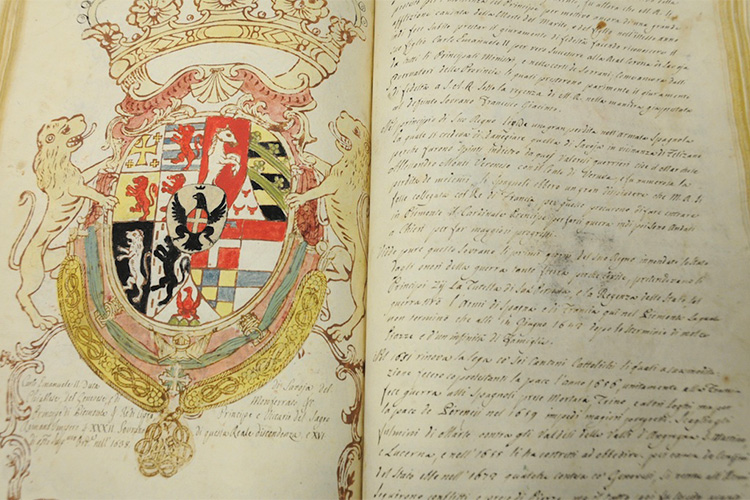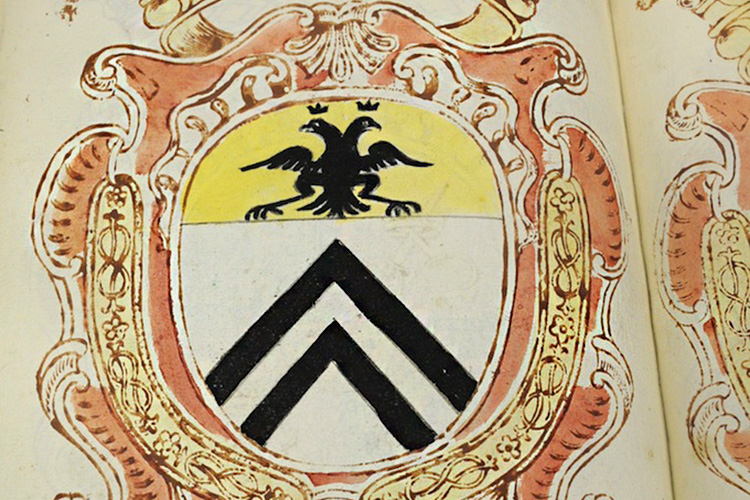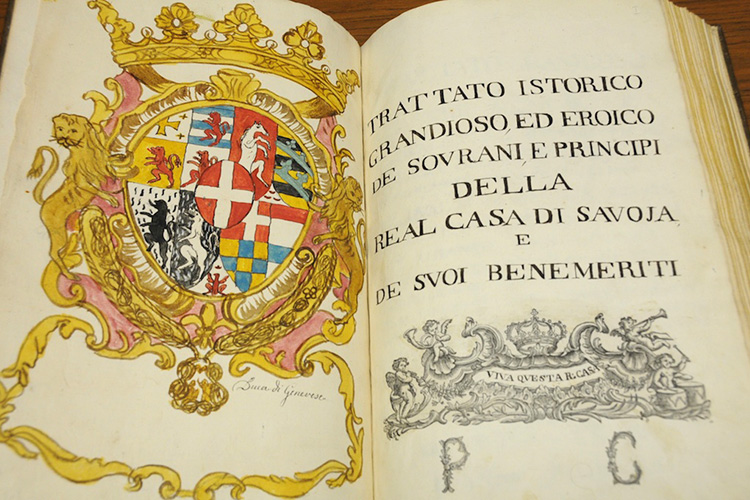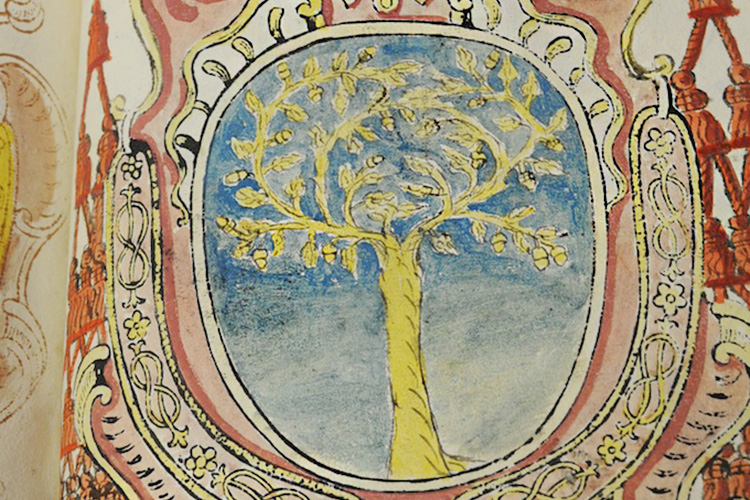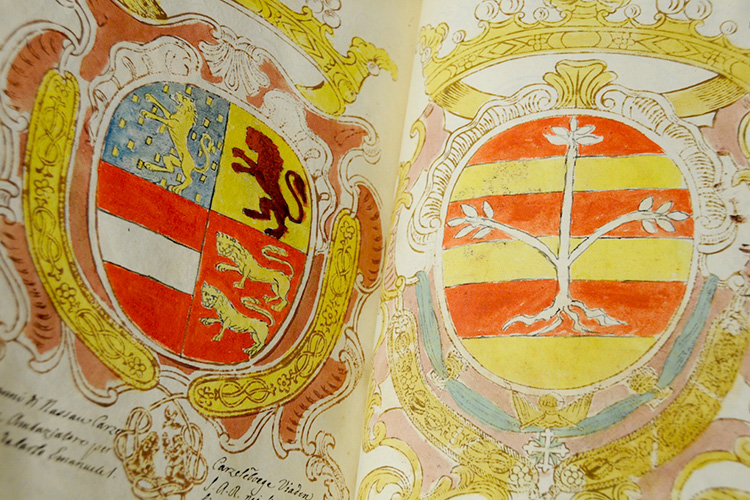Versione italiana English version Version française Versión en español
Trees, towers, crosses, flags, lions, griffins, eagles, dragons, prancing horses and also rhinos: all those constitute the intricate heraldic fauna and flora that, between fantasy and realism, appear in the coat of arms nicely watercolored which illustrate the valuable handwritten volume Trattato grandioso e la serie generale de cavalieri del supremo ordine della S.S. Annunziata..., by an unknown author, dated Turin 1765.
The opera in-folio contains 365 great noble coats about people who during the past four centuries were awarded with the Ruff of the S.S. Annunziata, from Amedeo VI (The Green Count) to Prince Eugenio from Carignano. The Ruff Award is the most important honor of Savoia house: founded by Amedeo VI for his sister Bianca's wedding with Galeazzo II Visconti in 1362. It was meant to "induce union and brotherhood between the potent in order to avoid personal wars" and it was reserve to the most important and loyal nobles. The original insignia were constituted by a golden silver ruff decorated with the motto FERT, closed by a ring with three Savoy nodes.
The manuscript, very interesting by the heraldic and historiographic point of view and conceived to be similar to Caprè's one (Turin, 1654), belonged to the famous Arborio di Gattinara family. It is composed by sixteen numbered pages of historical introduction written in beautiful italics; 413 numbered fronts containing pages about the history of some named characters and 363 great noble coats of arms printed in sepia color and nicely painted with watercolors. Other 29 coats can be found at the entrance, inside and in the end of the volume.
The Library preserves other interesting heraldic material, that can be found in many archivist founds, such principally the Claretta Fund, and also funds of Carrone from San Tommaso, Cotti from Ceres, Gazzelli from Rossana, Bosio from Asti, Bosses from Bosses, Families and villages in A and B.
To be noticed that heraldic was born in Middle Ages as a way of identification for people, families and institutions.

